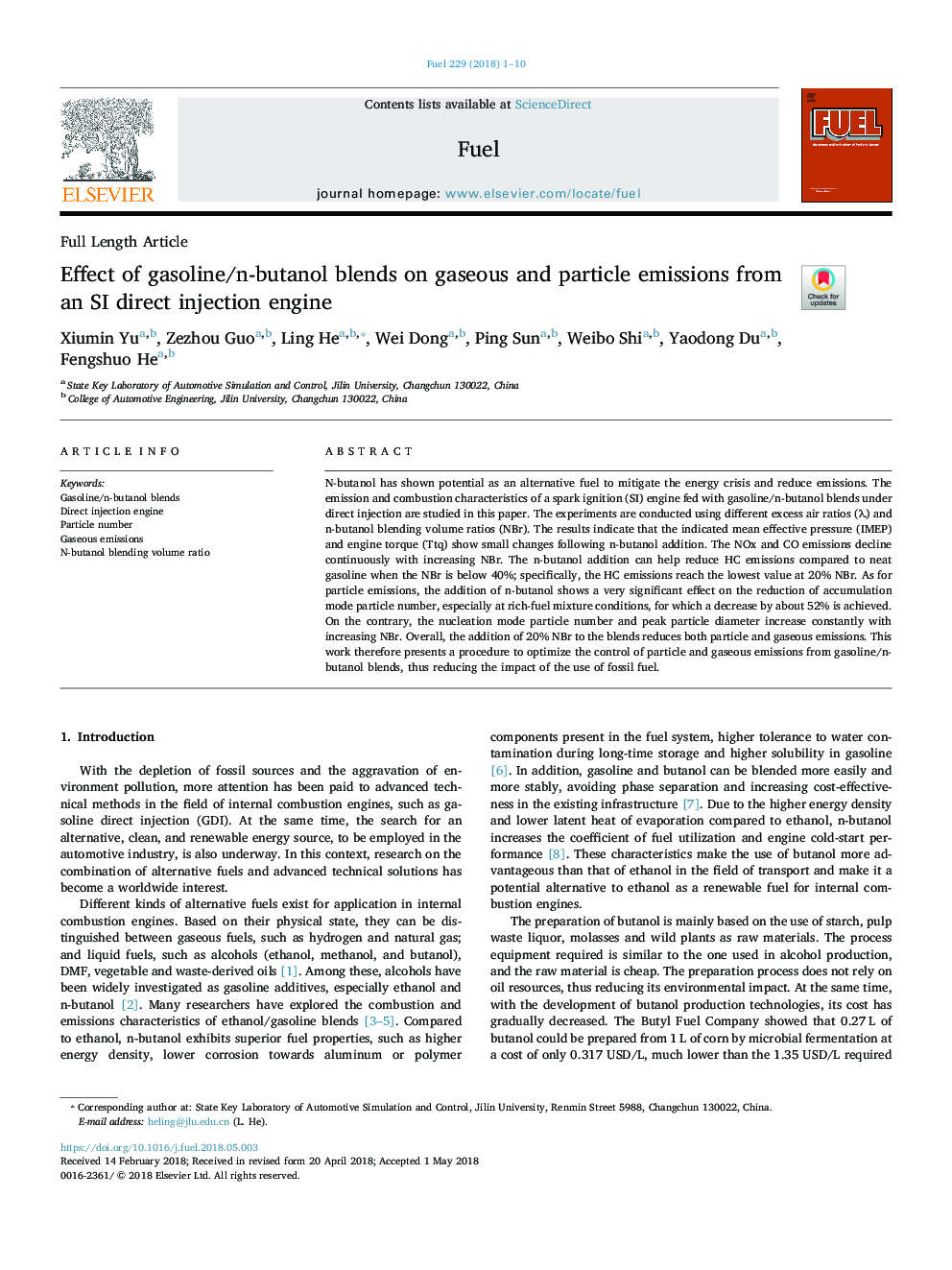| Article ID | Journal | Published Year | Pages | File Type |
|---|---|---|---|---|
| 6630665 | Fuel | 2018 | 10 Pages |
Abstract
N-butanol has shown potential as an alternative fuel to mitigate the energy crisis and reduce emissions. The emission and combustion characteristics of a spark ignition (SI) engine fed with gasoline/n-butanol blends under direct injection are studied in this paper. The experiments are conducted using different excess air ratios (λ) and n-butanol blending volume ratios (NBr). The results indicate that the indicated mean effective pressure (IMEP) and engine torque (Ttq) show small changes following n-butanol addition. The NOx and CO emissions decline continuously with increasing NBr. The n-butanol addition can help reduce HC emissions compared to neat gasoline when the NBr is below 40%; specifically, the HC emissions reach the lowest value at 20% NBr. As for particle emissions, the addition of n-butanol shows a very significant effect on the reduction of accumulation mode particle number, especially at rich-fuel mixture conditions, for which a decrease by about 52% is achieved. On the contrary, the nucleation mode particle number and peak particle diameter increase constantly with increasing NBr. Overall, the addition of 20% NBr to the blends reduces both particle and gaseous emissions. This work therefore presents a procedure to optimize the control of particle and gaseous emissions from gasoline/n-butanol blends, thus reducing the impact of the use of fossil fuel.
Keywords
Related Topics
Physical Sciences and Engineering
Chemical Engineering
Chemical Engineering (General)
Authors
Xiumin Yu, Zezhou Guo, Ling He, Wei Dong, Ping Sun, Weibo Shi, Yaodong Du, Fengshuo He,
